What innovations really have the potential to transform the food-producing landscape? Head of the Global Food Security programme Riaz Bhunnoo takes a whistle-stop tour.

In just a 35 year period the Earth is being tasked with producing more food than it has in the last 2000 years combined. We either need to find very clever ways of sustainably producing more on the same area of land, or we need to demand less. In reality we need to do both, and cutting-edge technologies will have a key role to play.
We held a workshop to understand the latest advances, and have just published a short think-piece ‘Game-changing technologies in agriculture’ based on these discussions. These are just a starter for ten so please add any further potential game-changers to the comments section below.
An essential part of any new innovation is engaging the public at an early stage – something the Global Food Security programme is supporting.
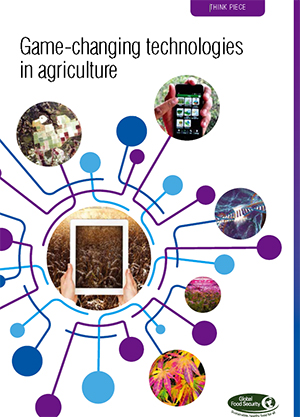
Game-changing technologies in agriculture
This think-piece showcases new technologies with strong disruptive potential in the next decade. New technologies will play an important role in food security, given that in just a 35 year period the earth is being tasked with producing more food than it has in the last 2000 years combined.
(You can view PDF documents by downloading a PDF reader. We recommend using Google Chrome or Mozilla Firefox web browsers.)
3D printing for custom chemicals
3D printers have the potential to revolutionise agriculture, allowing the production of chemicals (such as herbicides, pesticides and veterinary medicines) on the farm as and when they are required.
This technology essentially turns the 3D printer into a miniature chemical manufacturing plant. Chemical reactants (inks) are then dispensed (printed) into the vessel by the 3D printer using instructions from an app, where they react to produce new chemical compounds wherever you are in the world, so long as you have the starting ingredients.
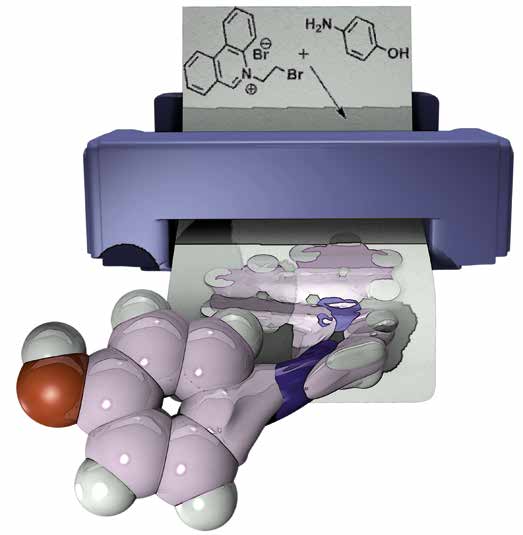
Green ammonia
Currently, ammonia production uses over 1-2% of the world’s energy and is responsible for 1% of global GHG emissions. Generating ammonia through electrochemical reactions instead of the Haber-Bosch process, using renewable energy, could allow fertiliser to be produced in a carbon-free way.
In the electrochemical reaction, hydrogen is produced by splitting water which is combined with nitrogen in the air on an electro-catalyst to produce ammonia. The process requires relatively low energy and is powered by renewable electricity from wind or solar. For farmers in developing countries who are often off grid and away from the major distribution routes for fertilisers, this technology has the potential to provide them with an in situ source of ammonia for fertiliser, which could dramatically increase their yields.
Aquaponics
This technology combines hydroponics (growing plants in water without soil) with fish farming to create a closed loop system.
The fish are kept in tanks and fed fish food – often tilapia is used because it is herbivorous and does not need to be fed wild-caught fish. Their excrement goes into the water, making it nutrient rich. This nutrient-rich waste water is pumped to the roots of the plants through a biofilter, which converts ammonia into the nitrates that the plants need. The nutrients are then taken up by the plant, which purifies the water. The purified water is then pumped back to the fish, and the cycle continues.
Given that the world will be 70% urbanised by 2050 and there is by good approximation no new land for agriculture, this could provide a game-changing and efficient way of producing local fish and vegetables, making the best use of available land.
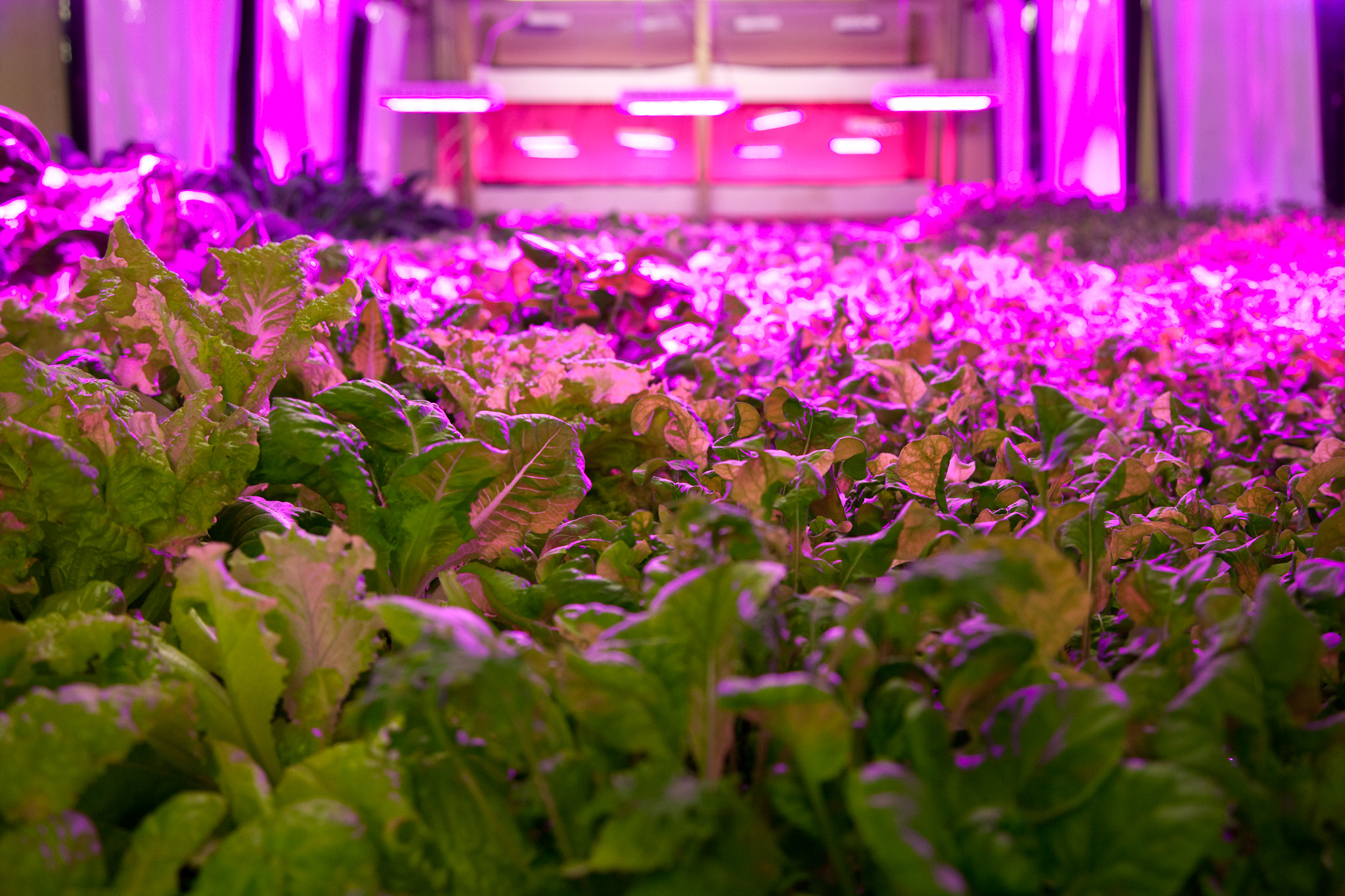
Sentinel plants
Sentinel plants act as indicators of biotic or abiotic stress in cropping systems, by providing an early signal such as changing leaf colour in response to a stress event.
These plants can provide early warning of new and emerging pests and diseases, nutrient deficiencies, or changes in soil conditions. For example, rosebushes planted in vineyards show earlier symptoms of fungal diseases compared to grapes, allowing for mitigating action to be taken.
So high throughput plant phenotyping is being used to identify desired plant traits in a range of environmental conditions and, when combined with genetic engineering, could provide a new suite of sentinel plants for the future.
Hyperspectral imaging with smartphones
A new low cost hyperspectral imaging sensor for smartphones, that can see in wavelengths other than visible light like infrared and UV, could provide a simple way to detect the early onset of crop diseases and substantially minimise crop losses in developing countries.
The technology would enable extension workers to scan plants for disease signals which would be referenced against a database of possible diseases, and they could then advise on interventions needed.
Further research is looking at using hyperspectral imaging (in combination with other imaging technologies) to identify plant disorders such as nutrient deficiencies; to detect insect disease vectors such as white fly which carries mosaic virus; to obtain real time information on below-ground water and nutrient flows; and to detect sea lice in salmon and trout for the aquaculture industry.
Remote sensing and the Internet of Things
Remote sensing technologies allow farmers and other stakeholders to make management decisions based on datasets at the landscape level, taking into account soil types, water table depth, land coverage, resource use, ecosystems data, pests and diseases and weather.
The field of sensors is booming, and the advent of wireless or Bluetooth charging capability means they can be powered remotely. Sensors are an integral part of a new approach called the ‘Internet of Things’, where data from different internet-connected devices is processed in real time through cloud computing, to determine the best course of action in response to changing conditions.
In the future it is likely there will be a move to automated decision-making, where the best course of action is automatically implemented via an internet-connected device.
Genome editing
A new technology called CRISPR now allows scientists to edit genomes with unprecedented precision, in an efficient and flexible way. The system consists of a strand of RNA that acts like a sat-nav to find and lock onto a gene of interest, and enzymes that act like molecular scissors to cut out the DNA at that location. The genome can then repair itself or a new gene can be inserted into the open space.
The technology is already being used to infer disease resistance in wheat, rice and tomatoes; produce disease-resistant pigs and goats; and enrich sweet oranges with vitamins.
One challenge for regulators is that it will become increasingly difficult to tell the difference between a crop or animal that has been genome-edited and one that has been produced through conventional breeding.
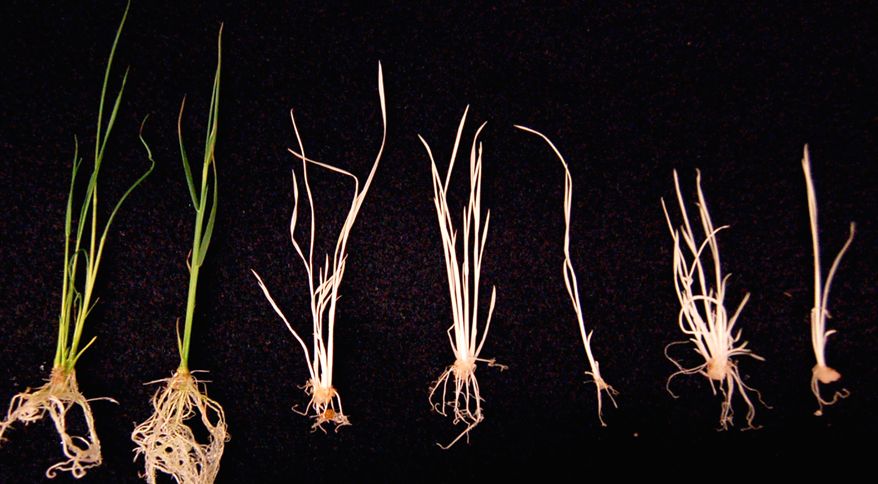
Prescription farming
Prescription farming is a way of integrating data about a farm and its environment to determine what will grow best in different parts of a field, and then planting different seeds across the field as required.
Combining the data with precision planters means different seed varieties can be planted at different depths and spacings, according to the unique local environment in a given part of a field.
In this way it is carrying out bespoke diagnostics and prescribing the best course of action at a micro scale. Early results have shown that this system can increase yields over a two-year period by 5% – an increase that is not currently possible through other means.
Conclusion
There are many new and exciting technological breakthroughs being made and this think-piece just scratches the surface.
If we are going to feed a growing population it is clear that we will need to use all of the tools in the toolbox, engage the public, and provide a supportive environment to enable the development of new ones.
There are going to be lots more game-changing technologies out there beyond the ones mentioned above, so please add them to the comments section below and continue the debate!
About Riaz Bhunnoo
Riaz Bhunnoo is Head of the Global Food Security Programme. Riaz leads a three strong team and drives forward GFS activities in partnership with the GFS Champion and the UK public funders of food security research. Riaz has worked at BBSRC since 2005, and in that time has also undertaken a secondment to the RCUK Executive Directorate to work on cross-Council research coordination and policy. Riaz is a strong advocate of interdisciplinary working to tackle the biggest challenges facing society.


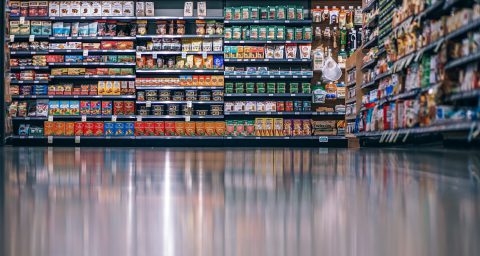
Fantastic piece! Really enjoyed reading it. Loads of exciting new tech for the future. I think phones and apps will have an increasingly bigger role to play. Not just in agriculture but at the consumer end as well to reduce waste and to see how healthy your weekly shop is.
Thanks Jenny, glad you liked the post! I completely agree about the role of apps on phones – as sensors become more sophisticated and produce more and more data, we’ll need better ways of making sense of that data. Apps will have a big role to play in presenting this data in an easily accessible way for producers and consumers alike.
Riaz, I am really pleased to see this subject getting attention. I hope to see a deeper discussion of the science with a sensitivity by the tech community that life is, and will remain always, in an analogue format that can never be reproduced digitally. We need to understand that the synthesized “biochemical” will never be more than an approximation of the organic forms of life. There is an overreach by technology providers to simplify life and when this result is achieved, some try to purvey these facsimiles as replacements for the real thing. The problem with this “group think” is that damage is being done by such arrogance, which is founded on large egos of those who see themselves as having god-like knowledge when, in fact we live in a world that has not addressed the most simple and basic issues of sustainable Food, Water & Energy. Our culture of science and technology is not in “control” but is at best an ongoing search for deeper understanding in a world that largely is in denial of our tremendous failures to live in harmony with Nature (that is life supporting life) and with our inner nature or with fellow human beings. This reflects a deep mis-understanding of who we are as human beings, with powers of body, mind and spirit. We are, with our consent, chained to ideas that result in exploitation of the people and the earth community, because of our “education for oppression” and the contrived scarcity, trauma and want that dominates lives lived in subjugation to a warfare economy that rules in the world. What I would hope for is that the high-tech community would open up their eyes, to see through the smoke and mirrors of Agribusiness and Industrial Food fiction, and see that the global consumer economies have become dependent on petrochemical, GMO “factory food” – that is fatal food for you and your families. For those nations who have commodity wealth, there is plenty of this fatal food and it is actually killing us, while the majority of people are going to perish from the failure of this same system to deliver enough grain products to feed the world. Even with 5 billion hectares of grain, mostly controlled by the Big Ag and Big Oil multinationals, we won’t make it, even with another billion hectares deforestation we will have food crisis on our doorsteps in 5 to 10 years.
Richard,
Thanks for your comments. I would agree that technology is not the answer in itself but an important part of the solution alongside many other measures. There is a lot of research looking at how to enable a sustainable, healthy and resilient food system which is looking at a wealth of broader issues. I would encourage you to look at the work we’ve been doing in our latest impact report.
Best,
Riaz